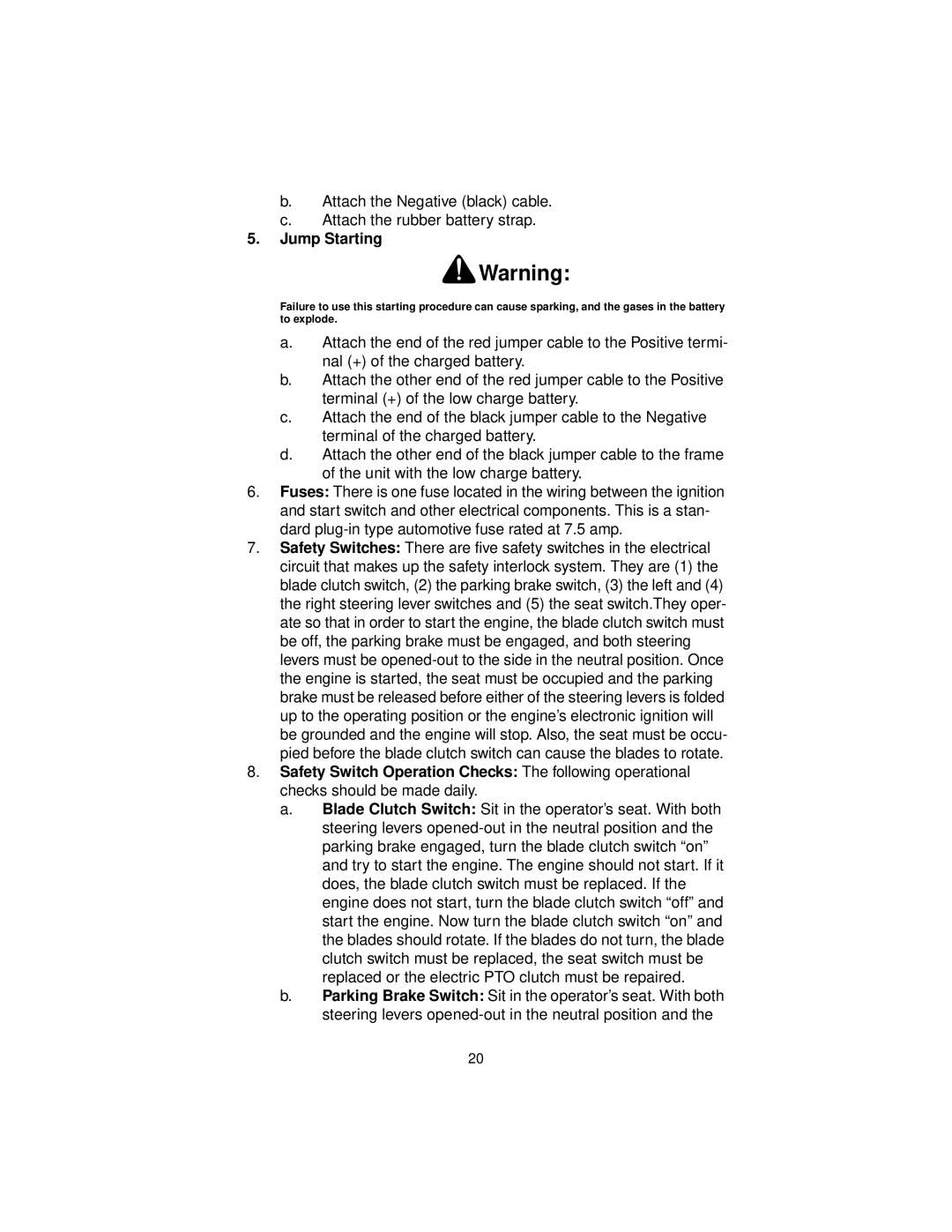b.Attach the Negative (black) cable.
c.Attach the rubber battery strap.
5.Jump Starting
![]() Warning:
Warning:
Failure to use this starting procedure can cause sparking, and the gases in the battery to explode.
a.Attach the end of the red jumper cable to the Positive termi- nal (+) of the charged battery.
b.Attach the other end of the red jumper cable to the Positive terminal (+) of the low charge battery.
c.Attach the end of the black jumper cable to the Negative terminal of the charged battery.
d.Attach the other end of the black jumper cable to the frame of the unit with the low charge battery.
6.Fuses: There is one fuse located in the wiring between the ignition and start switch and other electrical components. This is a stan- dard
7.Safety Switches: There are five safety switches in the electrical circuit that makes up the safety interlock system. They are (1) the blade clutch switch, (2) the parking brake switch, (3) the left and (4) the right steering lever switches and (5) the seat switch.They oper- ate so that in order to start the engine, the blade clutch switch must be off, the parking brake must be engaged, and both steering levers must be
8.Safety Switch Operation Checks: The following operational checks should be made daily.
a.Blade Clutch Switch: Sit in the operator’s seat. With both steering levers
b.Parking Brake Switch: Sit in the operator’s seat. With both steering levers
20
